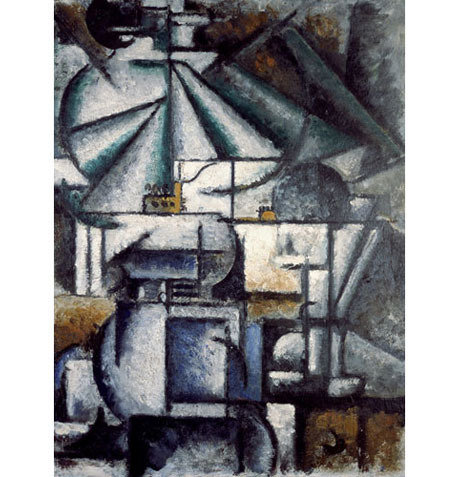1913
dal 21/11/2012 al 16/2/2013
Segnalato da
Alexander Archipenko
John Gutfreund
Henri Gaudier-Brzeska
Umberto Boccioni
Vladimir Davidovich Baranoff-Rossine
Marcel Duchamp
Ardengo Soffici
Amedeo Modigliani
Giorgio De Chirico
Brian Epstein
James Gill
Jon Wood
Pavel S. Pys
21/11/2012
1913
Henry Moore Institute, Leeds
The Shape of Time. The exhibition investigates how sculpture was uniquely positioned to give shape to such ideas through its materiality, spatiality and power of its ancient figurative traditions. Work by Archipenko, Gutfreund and Gaudier-Brzeska, Boccioni...

Curated by Jon Wood and Pavel S. Pyś,
1913 was an extraordinary year in the histories of modern European art, seeing artists explore increasingly experimental ways of representing the complex life of the modern world. This year produced thinking that would resonate its way through the future. It saw Guillaume Apollinaire's Cubist Painters, the start of the publishing life of Marcel Proust's Remembrance of Things Past, Sergei Diaghilev's The Rite of Spring, Roger Fry's Omega Workshops and the Armory Show in New York.
1913 witnessed international discussion of the 24-hour clock (which was adopted in France the year before) and the division of the globe into sequential and simultaneous time zones. The dominant theoretical concept of the year was simultaneity, an idea taken by many artists to advocate greater abstraction, multi-perspective viewpoints and simultaneous renditions of memory, intuition and experience. 1913: The Shape of Time investigates how sculpture was uniquely positioned to give shape to such ideas through its materiality, spatiality and power of its ancient figurative traditions.
Marking the eve of the centenary of this year, and with George Kubler's book The Shape of Time: Remarks on the History of Things (1962) in mind, 1913: The Shape of Time is an exploration of the complex lives sculptures lead after their original production. Kubler's book is held in our Research Library, along with other key texts that have developed this research. This exhibition points both to the impact of sculptural thinking on the mutability of time and to the ways in which temporal thinking impacts on the production of and encounter with sculpture.
All of the works on display were first produced in 1913, however many have been cast or replicated at a later date - most explicitly seen in our concurrent Gallery 4 exhibitions, Sturtevant: 'Duchamp Bicycle Wheel' (1969-73), a faithful repetition by Sturtevant of Marcel Duchamp's 1913 sculpture 'Bicycle Wheel', and Vladimir Markov: Displays and Fictions, a 1912-14 photographic study of museum collections of sculpture instructing how to look at sculpture.
1913 saw traditional understandings of the object and body in space challenged through the cubist-inspired works of Archipenko, Gutfreund and Gaudier-Brzeska, as well as by the futurism of Boccioni, the dynamism of Baranov-Rossiné and the twisted measurements of Duchamp's '3 Standard Stoppages'. Such sculptural thinking impacted on two-dimensional works too: a small still life painting by Soffici, for example, presents a fragmented depiction of a lamp, sculpturally opened up through light and space.
Artists looked to both the speeding up of time that characterised a rapidly industrialising European society, as can be seen in Vladimir Baranov-Rossiné 'Rhythm', and to slow, more historical, registers of sculpturally rendered time. Here Modigliani's drawing 'Caryatid' and de Chirico's painting 'The Tower' recount an architectural sculptural imagination, while the carvings of Epstein and Gill reference the traditional approaches to sculpture that cast long shadows over the culture of 1913.
Opening: 22nd November 2012
Henry Moore Institute
74 The Headrow, Leeds
Hours: Tuesday - Sunday: 11am - 5.30pm
Free Admission



